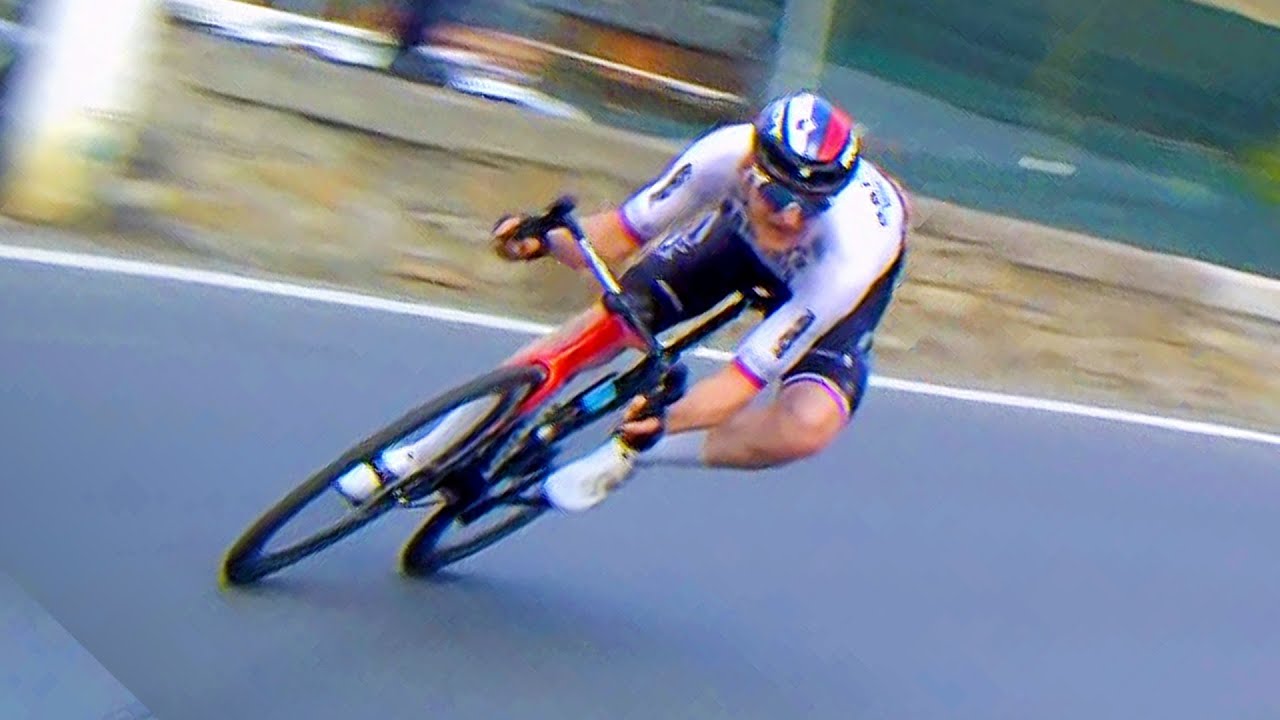Til you’re sliding in mud. Then it’s just a slip n slide. ![]()

Yes it does. Physics isn’t hard. You shift back, it adds weight on the back tire. It has to as weight just doesn’t go away, unless you grab a bunch more brake than you think you have and catapult yourself into history.
And braking becomes breaking…
Except, it doesnt. You’re conflating location of center of mass with front/rear tire weight distribution.
Front/rear weight distribution is dependent on BOTH location of your center of mass, AND braking pressure.
I do the same.
I’d say that is so true that Mohoric won a Milan San Remo using a dropper post on a road bike to be able to shift his weight even more.
By the way, it is worth to watch it again:
Apologies, as a fellow mechanical engineering degree awardee I should’ve added a caveat…
MAX braking force without loss of traction. Lets see the calculations then?
I’ll give you an hourly rate, 4 hour minimum!
Loss of traction occurs before shortest stopping distance if only using one wheel, you would know this.
Assuming equal braking force, I assure you that a rider centered on the saddle has more weight on the front (also less on the rear) than a rider with their weight shifted rearward at the same brake force.
I won’t waste our time with pointless estimates on actual distribution, but I can assure you that moving the rider weight rearward will impact functional weight distribution (aka weight on each tire) compared to a saddle centered position.
And if the goal here is “MAX” braking efficiency (shortest stopping distance), anyone not moving rearward is losing out since they will reach peak values on the front earlier (resulting in tire slip or worse in a flip if center of mass is too high) than a rider of the same mass & size that does move rear & down.
Maybe I do, maybe I don’t… I’m just interested in the PubMed proof of backing up claims on the internet ![]()
Oh, look, 44 new posts in the Unpopular Opinions thread! I’m sure this will be a fun, light-hearted romp through …
… oh. oh, no. oh, god no. ![]()
![]()
That’s the kicker though. It’s NOT equal. Moving weight rearwards allows you to increase braking force, which pushes weight distribution further forwards.
No matter how you cut it and where your weight is, if you’re braking optimally for minimum stopping distance, you’re putting as much braking force as you can into the front, just short of lifting the rear wheel, and you’re braking as much as possible with the rear just short of skidding (which is minimal).
That’s probably convoluted. My point is that moving weight rearward just allows you to squeeze the front brake harder, not the rear.
Unpopular, or popular?
Hook-less rims are a crude/cunning method for population control.
Car rims are hook-less, but a bike isn’t a car. The car tires have a really thick bead, and a machine is needed to install tires on the rim. If car rims were hooked, tire manufacturers could make the bead on their tires thinner as the pressure would ‘lock’ the tire in. ![]()
And yet when I brake I use more rear, and will add front after the rear brake, and use less front than rear because after using the rear brake, the implied weight on the front wheel increases adding to the braking effect of the braking system. I would NEVER start with the front brake as people have pointed out, it risks causing a lever function that drives the rider into the ground in front of the bike.
I’m with you on this one, as a fellow ME. Max braking creates a moment about the front wheel, as that moment increases, the normal force on the rear wheel decreases. Even if you move back on the saddle, that just changes the magnitude of the moment that your bike can have without going over the bars.
I think the loss of traction part of the argument may be where the disagreement is coming from? However, on dry clean pavement I feel like I can go over the bars before I lose traction on the front wheel-but I’m not sure about that.
It’s pretty easy to lock up a front wheel. You should try it, just to know where the edge is.
Really? On a road? Genuinely asking…I’ve never done it a single time. Not on dry pavement
I mean one is nothing, you can lock up two wheels easy on dry pavement.
Our experiences are very, very different…
